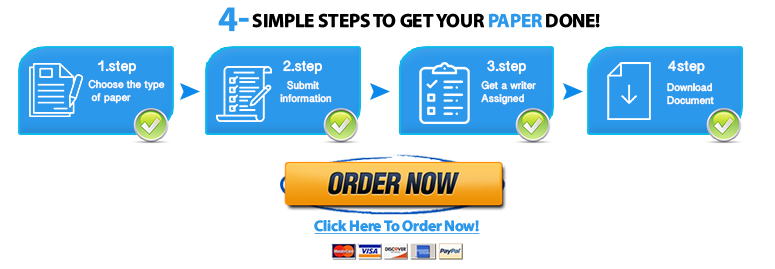Resource Management in Primary Care
- MAKE A PEER RESPONSE OR REVIEW ON THE ESSAY BELOW
- Length: A minimum of 150 words per post, not including references
- Citations: At least one high-level scholarly reference in APA per post from within the last 5 years
Resource Management in Primary Care
APRNs, especially NPs, may practice in almost every health setting, including but not limited to the rural health clinic, emergency department, urgent care, community health center, family practice, and pediatric clinic. For the APRN role to survive, revenue is the key. It is imperative for APRNs to be competent clinicians and equally well versed in the business side to maintain a place in the healthcare industry. For this topic, I will discuss the APRNs reimbursement in the emergency department setting, some of the hospital-acquired conditions that significantly affect the revenues, and the effect of these conditions on how APNs provide care for the patients in this setting.
According to the Medicare Benefit Policy (2021), CMS will cover APRNS’ professional services if qualifications are met and legally authorized to furnish services in the State of practice (for NPs and CNS). Also, NPs apply for National Provider Identifier (NPI) to bill Medicare. Medicare requires APRNs to be registered nurses who possess NP national certification and a master’s or doctoral degree in nursing practice. CMS also defines the covered NP services based on the State’s Scope of Practice; however, excluded from the coverage are routine procedures and services that are not reasonable and necessary for diagnosing or treating an illness or injury. In an emergency setting where a physician and APRN from the same group of practice share the evaluation and management, the service may be billed only to the APRN if the physician made no “face-to-face” encounter with the patient (for example, when the physician only reviewed the chart). But if both the physician and APRN perform face-to-face interaction with the patient, the physician OR the APRN may report the service. CMS will deny APRN service bills that another provider already billed; therefore, coordination is vital. If the service billed is under the physician’s NPI, the physician will receive 100% of the physician rate; if the bill is under APRN’s NPI, the APRN will receive 85% of the physician rate for the service provided. If the APRN and physician, employed by different groups, submit bills, they will reimburse the first to arrive at the payor’s office and deny the later bill (“Reimbursement”, 2012).
In the effort to link Medicare payments to healthcare quality, CMS established the Hospital-Acquired Condition Reduction Program. CMS reduces or “denies Medicare reimbursement for specific hospital-acquired conditions (HAC) that were not present on admission” (Joel, 2018, p.168). Many would think that there is a lesser chance of acquiring hospital-acquired infections in the emergency room and fails to include the department in the initiatives to reduce HAC (MacDonald, 2016). Emergency room visits are associated with more than threefold increased risk of gastro and respiratory infections in the elderly (Quach et al., 2012). Furthermore, emergency rooms are crowded most, if not all of the time, and patients are put near one another, increasing the risk for hospital-acquired infection. The most common types of hospital-acquired infections are bloodstream infections (BSI) like vascular catheter-associated infection, pneumonia (such as ventilator-associated pneumonia), catheter-associated urinary tract infection, and surgical site infection (SSI) (Custodio, 2021).
Our previous discussions established that APRNs could fill in the medical gap brought about by the medical provider shortage in the country, especially in rural areas. Yet, APRNs still face barriers in their scope of practice that are limited or restricted by State regulations and reduced Medicaid reimbursement rates (Barnes et al., 2017). The pay for performance program links the reimbursements to quality measures, outcomes, and utilization measures. It encourages cost management without compromising the quality of care provided and enhances the transparency and accountability required from the healthcare providers, including APRNs, in any healthcare setting (Joel, 2018).
References:
Barnes, H., Maier, C. B., Altares Sarik, D., Germack, H. D., Aiken, L. H., & McHugh, M. D. (2017, August). Effects of Regulation and Payment Policies on Nurse Practitioners’ Clinical Practices. Medical care research and review: MCRR, 74(4), pp. 431–451. https://doi.org/10.1177/1077558716649109
Custodio, H.T. (2021, October 21). Hospital-Acquired Infections. Medscape. https://emedicine.medscape.com/article/967022-overview
Joel, L.A. (2018). Advanced Practice Nursing: Essentials for Role Development, 4th ed., p.168. Philadelphia, PA: F.A. Davis
MacDonald, I. (2016, November 22). Fighting hospital-acquired infections: Don’t forget the ED. Fierce Healthcare. https://www.fiercehealthcare.com/healthcare/don-t-forget-ed-efforts-to-fight-hospital-acquired-infections
Medicare Benefit Policy. (2021, March 12). CMS Manual System. Centers for Medicare and Medicaid Services. https://www.cms.gov/files/document/r10639bp.pdf
Reimbursement of Advanced Practice Registered Nurse Services, A Fact Sheet. (2012, March/April). Journal of Wound, Ostomy and Continence Nursing, 39(2S) pp. S7-S16.
doi: 10.1097/WON.0b013e3182478df0
Quach, C., McArthur, M., McGeer, A., Li, L., Simor, A., Dionne, M., Lévesque, E., & Tremblay, L. (2012, March 6). Risk of infection following a visit to the emergency department: a cohort study. CMAJ: Canadian Medical Association Journal, 184(4), pp. E232–E239. https://doi.org/10.1503/cmaj.110372


